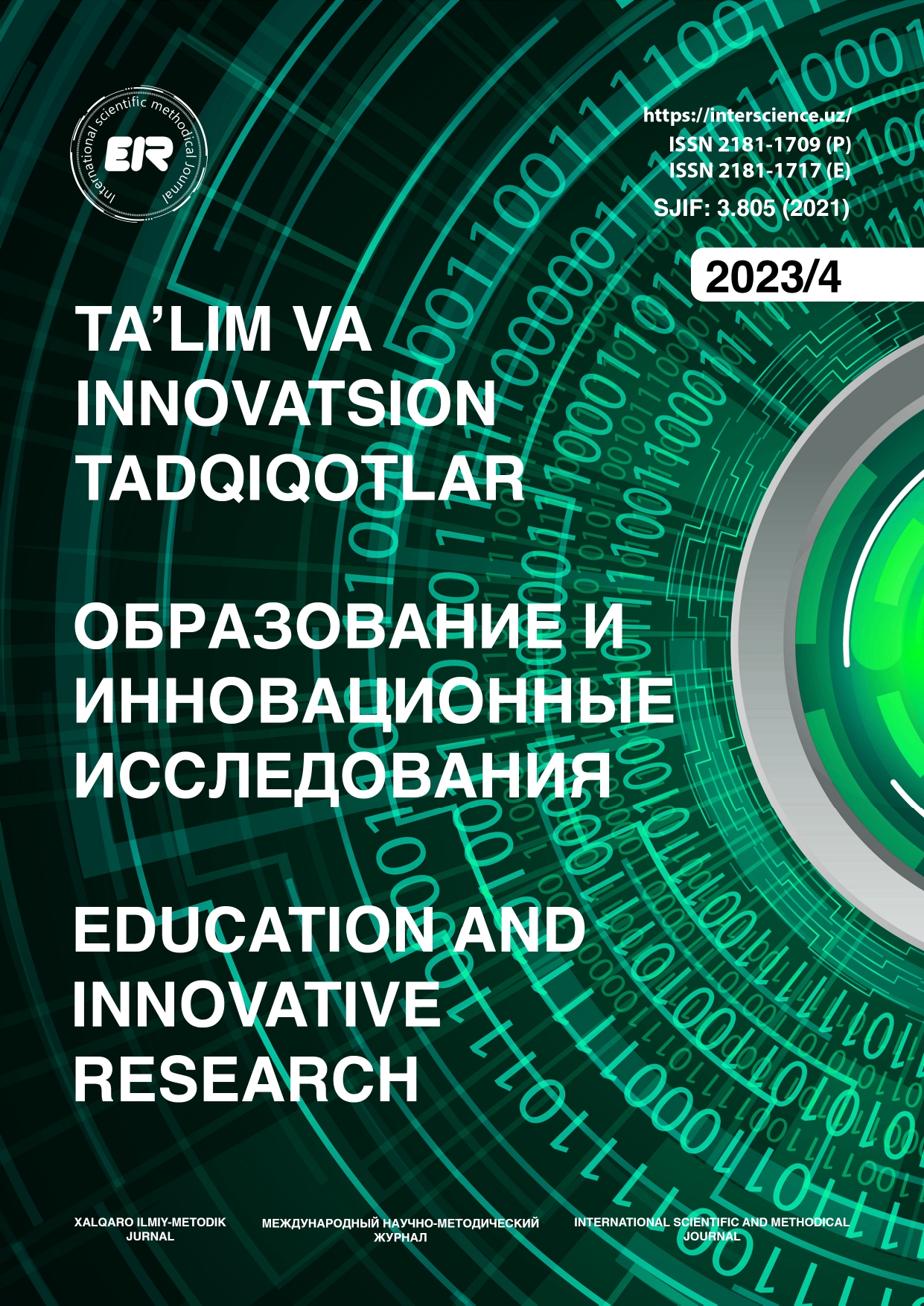METHODOLOGY FOR FORMING STUDENTS’ CREATIVE COMPETENCE IN FINE ARTS LESSONS
Muhammadiyeva Zarina Bahodirovna, Termiz State University is an associate professor of the Department of Fine Arts and Engineering Graphics
Abstract
Instead of diverting young people who are interested in visual arts to other directions, to more useful and materially benefcial areas and jobs, by properly
directing the interest and enthusiasm of the child, we need to further develop their interest. After all, there are many artists who are known to the world for their painting and have fans. It is enough to have the right guidance, favorable conditions and interest for such achievements. Today, the student will be a doctor, worker, clerk, designer, engineer, teacher or creator of any other feld in the future, and for each of them, it will be necessary to draw and use it. Abstract: Those interested in visual arts instead of diverting young people to other directions, to more proftable and materially benefcial areas and jobs, we should properly direct the child’s interest and enthusiasm and further develop his interest. After all, there are many artists who are known to the world for their painting and have fans. It is enough to have the right guidance, favorable conditions and interest for such achievements. Today, the student will become a doctor, worker, servant, designer, engineer, teacher or creator of any other feld in the future, and for each of them, drawing and using it will be necessary.
References
S.Bulatov. O‘zbek xalq amaliy bezak san’ati. Toshkent-1991 yil.
M. Pritsa «Toshkent ganchkorligi» Badiiy adabiyotlar nashriyoti. 1960 yil.
S.Bulatov. O‘zbekiston san’ati tarixi. Toshkent 1991 yil.
T.Abdullayev XIX-XX asrlarda O‘zbekiston kandakorlik san’ati. Toshkent 1994.
R.Xasanov. Amaliy bezak san’ati metodikasi. Toshkent 2003 yil.
D.Mamatov «Kompyuter grafikasi» Durdona nashriyoti, B. 2020.-172.
Mamatov D. Projects of making clay and plastic toys in pre-school education //Theoretical & Applied Science. – 2019. – №. 9. – С. 281-285.





